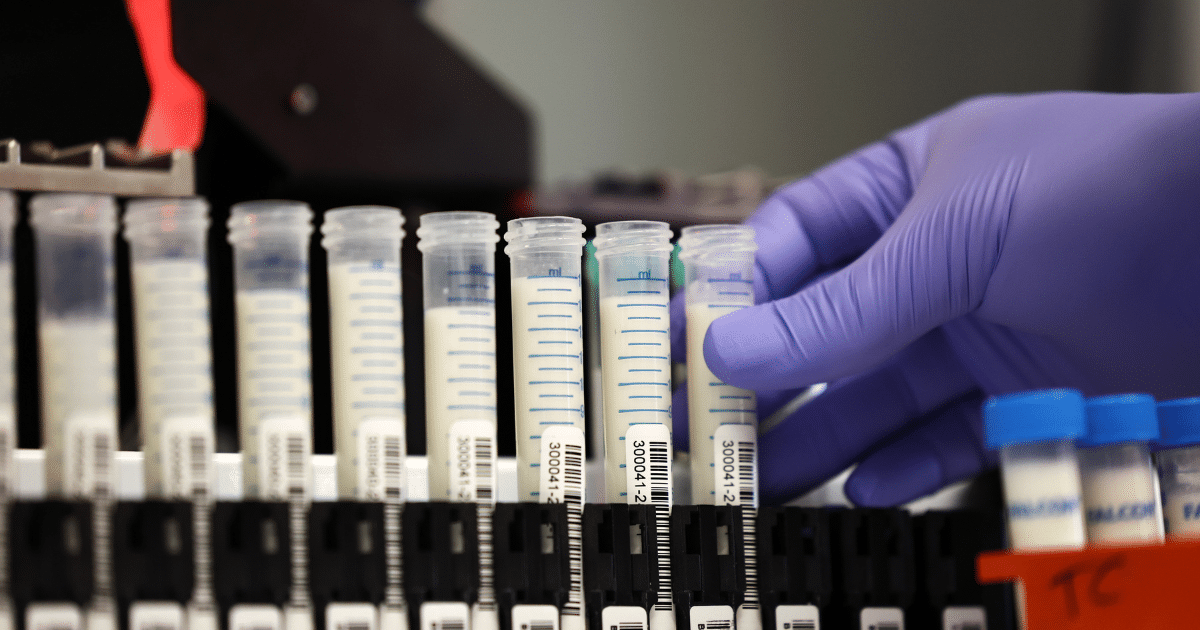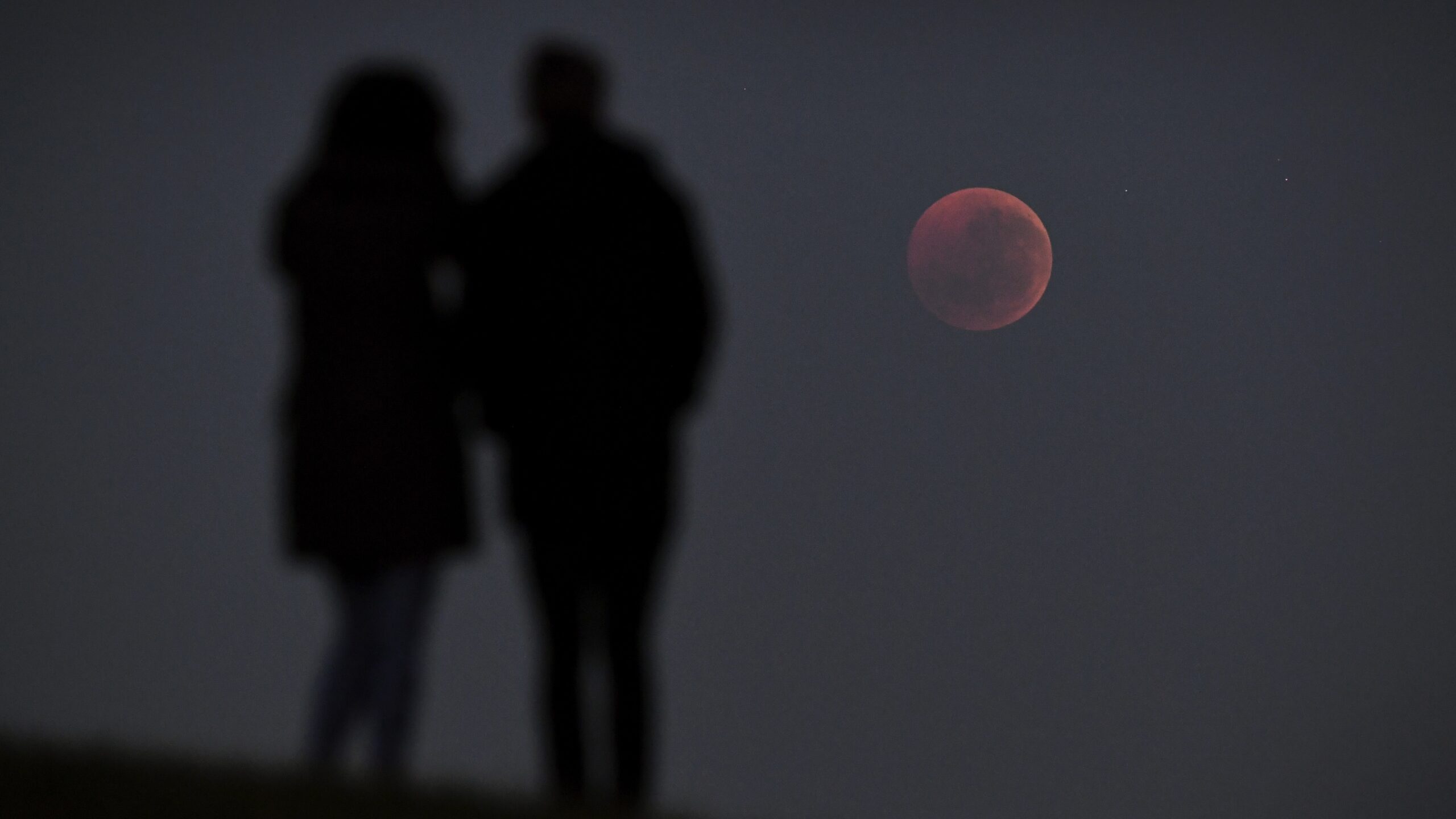For years, veterinary researcher Maurice Pitesky has run up against a roadblock while tracking the rapid spread of avian flu: a lack of public data. He has attempted to obtain — but has repeatedly been denied — state and federal data revealing the location of avian flu outbreaks on U.S. farms. It’s data he says could help inform predictive modeling to warn farmers about a higher risk of avian flu transmission near their property, giving them enough time to tighten biosecurity measures and potentially ward off an outbreak.
A national predictive surveillance system doesn’t exist yet, but Pitesky thinks it could be very feasible — if only he had access to more precise government data.
Data revealing the location and other information about the farms with animals that have contracted avian flu has generally been deemed confidential by state and federal government officials. The officials collecting this data do not make it publicly available under most circumstances, citing legal exemptions and agreements with agricultural businesses. The aim is often to protect farmers from economic losses, but in effect, Pitesky says, these decisions are a barrier for scientists scrambling to monitor the evolving, adaptable virus as it circulates in the U.S.
“The state and the feds have all that data about which farms are positive and which farms are negative,” Pitesky, an associate professor at the UC Davis School of Veterinary Medicine-Cooperative Extension, tells Sentient. “They’ve taken a good idea protecting farmer information to an illogical conclusion — in the sense that you basically have all that data siloed by just a few people who, at this stage, aren’t really doing very much research.”
Some of this data even originates at Pitesky’s own university. The California Animal Health and Food Safety Laboratory at UC Davis is the only lab in California equipped for high-risk avian flu testing in poultry and cattle — data that is reported to the public by the state and federal government, while stripped of data about the farms.
The ongoing H5N1 outbreak of highly pathogenic avian influenza (HPAI) was first identified in U.S. commercial poultry in February of 2022. Since then, the novel virus has become the longest, most deadliest animal disease outbreak in U.S. history, and while recorded cases of the virus have lulled, there is no sign of the virus disappearing. As wild birds, the primary reservoir of the virus, migrate again in the fall, some scientists anticipate another surge in the United States.
Pitesky and other scientists say one key roadblock to slowing the spread of H5N1 is the lack of public disclosure of more granular data, making it more challenging for research scientists to monitor the virus.
“One of the real failures is this inability to collaborate, inability to share information and the siloing of data where it should be, ultimately a collaborative process where we’re really identifying risk factors,” says Pitesky. “But we’re just not there yet for some reason.”
It’s a barrier that Andrew Pekosz, a virologist and the co-director of the Johns Hopkins Center of Excellence for Influenza Research and Surveillance, has also faced in his research monitoring how H5N1 spreads and mutates.
“It’s very challenging to get a complete data set that includes, for instance, right numbers of animals dead, the sequence of the virus that was present in there, the date and the precise location of the farm — all those things that you would need to do an epidemiological study to see how things are moving,” says Pekosz.
Without these variables, he says it “becomes harder to connect and be specific about where the viruses are moving and whether outbreaks are connected to each other.”
The Importance of Avian Flu Metadata
Even though H5N1 has circulated in the U.S. since 2022, scientists are still largely following its trail. There is not a national surveillance system that predicts where avian flu will emerge next. Instead, the tracking of the virus is largely performed retroactively: the public only knows about confirmed cases. This differs from the predictive surveillance system that has developed for Covid-19; the Center for Disease Control provides a weekly forecast of the number of Covid-19 hospital admissions, on a state and national level.
The public data that exists on avian flu testing in animals is available on the websites of state agricultural departments and the U.S. Department of Agriculture (USDA), which maintains a public dashboard of H5N1 cases reported in the last 30 days. This includes the confirmed date of a positive test, the country and state of the outbreak and the type of farm business (such as live bird market, commercial turkey farm, etc.). But this testing data exists in a vacuum of other critical data points — it lacks contextual data, known as metadata, associated with each recorded avian flu outbreak.
“The metadata generally that’s been associated with either reports of positives — or even worse when you have sequence data on the virus — has just been abysmal across the board,” Meghan Davis, an epidemiologist and microbiologist at Johns Hopkins Bloomberg School of Public Health, tells Sentient.
One kind of metadata that would be helpful to have, Davis says, is more precise geographic tags for each H5N1 detection. She also would like information on the date of the outbreak (which may differ from the date of the confirmed positive test) and more detailed demographic data on the animals, known as signalment data, such as their breed, sex and age — information that could surface risk patterns. Like Pitesky, she envisions some of this metadata could feed into more predictive tracking surveillance models.
“If you can actually tag these down a little bit better and then start to look at the potential for clustering and time and space, you might get a better sense of movement, and movement can then feed into more predictive models forecasting,” says Davis. “It would be lovely if you could in real time, or as near to real time as you could, actually send alerts out into areas where you predict it’s going to be next.”
There is also a lack of comprehensive genetic sequencing data, which is submitted by scientists to repositories such as the National Institutes of Health’s GenBank U.S. This data is crucial for tracking how the virus is evolving and identifying new clusters, but the sequences tend to include very little metadata — to a point where “it may not be even detailed enough for you to really be able to study how the viruses are spreading,” says Pekosz.
In particular, he’d like metadata on the “precise areas, precise dates of collection, the animals that they were collected from, the nature of the samples. Did you swab an animal? Did you harvest something from the animal? What’s the tissue that was the source?” — data that can help shed light on the genetic linkages between outbreaks.
The federal data on testing for cattle is especially limited. According to the California Department of Food and Agriculture, “The USDA website reports new (first time detections) in dairies; it does not capture when a herd is cleared, ongoing cases, or reinfections on premises that had previous detections.” As a result, there can be significant discrepancies between California’s more detailed data and federal data on dairy outbreaks.
For instance, on August 1st, California reported that 43 farms that had been previously infected reported new infections and were placed back under quarantine. But the federal data reflected a different story, revealing just one case reported on that day of avian flu in dairy herds in California. Depending on which dataset you’re looking at, you could have a very different understanding of avian flu infection levels.
There is also a lack of public information around how live cattle are transported around the country, which drives infection risk. At a 2024 workshop, hosted by the National Academies, Martha Nelson, a staff scientist at the National Institute of Health, discussed the need for a “national database for dairy cattle movement.” Nelson, who discovered the zoonotic origins of the virus that caused H1N1 in 2009, said that this data could help scientists forecast H5N1’s movements across the U.S.
Drawbacks & Challenges of Obtaining Avian Flu Data
Scientists seeking to request more data face a web of legal exemptions. Information that is collected through the state or federal government can potentially become a public record, but over the years, agricultural data has become increasingly exempt.
“It is incredibly difficult to get any kind of specific information about industrial farm operations, especially geospatial data because of an overlapping system of exemptions from the public records laws,” says Kelsey Eberly, an attorney at the legal nonprofit FarmSTAND.
One of the main legal barriers is a sweeping 2008 exemption to the Freedom of Information Act, which prevents the release of nearly all data that farmers provide to the federal government, including geospatial data and information “concerning the agricultural operation, farming or conservation practices, or the land itself.” Then there are also state-level exemptions to records laws, which often cite the need to protect business privacy and sensitive commercial information.
Yet some researchers agree that the exemption of some farm data is necessary, even from a public health standpoint. The sweeping public disclosure of farm data could potentially disincentivize producers from complying with reporting requirements, fearing that this could trigger economic loss, for instance — an argument raised in the workshop hosted by the National Academies.
Davis suggests that there might be a compromise: more aggregated metadata while still preserving some degree of anonymity for the farms. This would enable researchers to analyze more detailed genomic and epidemiological patterns, but satisfy concerns over privacy. She points to how the location data could be limited to a specific radius to protect farm privacy, so “you don’t lose the importance of the regionality, but you no longer have it tied to a specific address.”
Scott Wells, a veterinary epidemiologist at the University of Minnesota, has found a way to work with farmers to obtain more specific data on avian flu. It’s a strategy he says has enabled him to get around some of the data privacy issues that inevitably arise when tracking zoonotic disease outbreaks.
“A lot of my career then has been ‘Okay, how can I help answer important research questions in which I do need access to data, but do it in a way that is acceptable to producers?’ Wells tells Sentient. “Sometimes the government doesn’t have the data, and so then it’s a matter of trying to work with producers and producer organizations.”
With the support of an USDA grant, he currently leads a cross-disciplinary research team tracking the spread of H5N1 between cattle herds — a project that has prompted questions about how to best obtain access to the farms.
“We have to always think about incentives. So why would a producer want to participate? What’s the value of participating? What’s the potential? What are potential disincentives?” says Wells. “Obviously, one important disincentive is if they’re going to agree to participate in the study with us, they don’t want that to lead to regulatory action.”
To that end, his research team has decided to test milk for antibodies, which could be indicative of a previous avian flu infection rather than a current infection. “So there’s no regulatory action for a positive sample,” says Wells. It’s an approach that he says has led a couple producers to cooperate with his team in the process, allowing the researchers direct access to farms without fear that this could prompt regulatory action.
There are limitations to this approach too, Wells acknowledged. “I mean, they’re going to do what’s best for their industry, right? And we have to recognize that. So there, I guess, could be some questions that don’t get addressed through a collaborative process.”
A Barrier to Journalists and Public Health Advocates
The lack of publicly available data on avian flu is not just a barrier to scientists. Sentient attempted to obtain testing data to confirm a potential avian flu outbreak at a Foster Farms facility in Turlock, California. In July, we filed a public records request for “the results of any PCR or serological testing performed by the California Animal Health and Food Safety Laboratory at UC Davis, between January 1st, 2024 and January 31st, 2024.” But we were similarly denied this request by UC Davis’s records officer, who deemed it “unwarranted invasion of personal privacy,” and therefore exempt from disclosure.
This data would have helped clarify records that appeared to show Foster Farms refusing avian flu testing in early 2024. “Foster Farms upper management indicated that they do not want to allow APHIS to take a sample. Can they refuse APHIS to do that to send someone there?,” wrote Virginia Felix, a deputy district manager at the U.S. Department of Agriculture’s Food Safety and Inspection Service, on January 24th of 2024.
The records describe 20 percent of three trucks of heavy hens showing “gross legions: swollen heads, especially around the beak; clear to mucoid ocular and nasal damage, higher mortality than usual” — symptoms that may indicate avian flu or, potentially, another common poultry illness such as avian metapneumovirus or coryza. Without more transparency around avian flu testing, it’s not possible to determine why these birds were sick.
Foster Farms has denied resisting avian flu testing. “With the knowledge of USDA FSIS onsite personnel, bird samples were collected and sent to the California Animal Health and Food Safety Laboratory at UC Davis for analysis. Thus, tests were conducted, and the PCR results showed no evidence of Avian Influenza,” a representative of the farm wrote in an e-mail to Sentient. “These findings were officially documented, reported to USDA APHIS and the California Department of Food & Agriculture, and provided to onsite USDA FSIS inspectors.”
When asked if Foster Farms could help us verify their claim by providing the testing results, a representative for the farm responded, “For reasons of protocol and confidentiality, we are unable to provide the specific laboratory report.” The USDA and Virginia Felix didn’t respond to requests for comment to clarify what happened on January 24th.
Farmworker advocates faced similar challenges to obtaining data on farm locations, especially early in the avian flu outbreak.
“It’s always been hard to get farm location data in any kind of state or national scale. It’s pretty private,” says Bethany Alcauter, an occupational epidemiologist with the National Center for Farmworker Health, which supports a national network of migrant health centers and farmworker advocacy groups. To get around this, they developed a map with dairy farm locations based on inspection reports and other public data.
“It would have been nice if every state, the Department of Ag and the Department of Health, collaborated on it and kept those data private,” added Alcauter. “But just to make sure that at least public health folks could collaborate.”
 Courtesy of Café Spice Namaste
Courtesy of Café Spice Namaste





